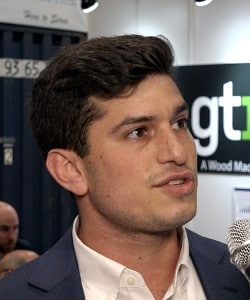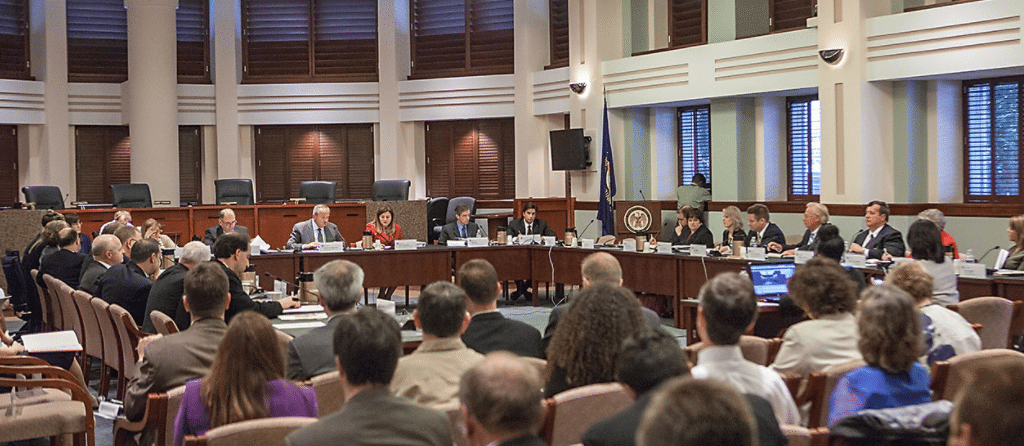pv magazine: Now that the ITC has found injury, what is next?
 Cory Honeyman: What is next is coming up pretty soon. On October 3 the trade commission is going to have a public hearing on remedies, so a similar setup to what happened on the 15th, where different stakeholders come in and give their opinions.
Cory Honeyman: What is next is coming up pretty soon. On October 3 the trade commission is going to have a public hearing on remedies, so a similar setup to what happened on the 15th, where different stakeholders come in and give their opinions.
This hearing is focused on what different stakeholders think should be the remedy. At this point all of the different stakeholders both on SEIA and SolarWorld’s side are scrambling to put together a position on what they think appropriate remedies should be in light of this.
For better or worse, after October 3 there aren’t any public milestones to check off until the 13th of November when the ITC finalizes its recommendations to the Trump Administration.
pv magazine: Suniva’s proposed remedy was seen by many as extreme. What are the odds that ITC recommends a significantly less severe trade remedy?
Honeyman: The answer to that question can be somewhat better answered on the third when we hear how the trade commissioners respond to the cases made for lower tariffs or alternative remedies.
I think historically one way to look at it is: Of the 19 times that we have seen remedies put into effect under Section 201, historically we have seen a range of upwards to 30% or less of equivalent premiums to domestic manufactured goods. We’ve seen a range of 20-30%.
Every case can and should be evaluated in a vacuum, but historically speaking, that’s the range we have come across in terms of tariff levels on any imported goods. At the same time, there are such few instances in the end that you can point to as precedent, and that each of those decisions were evaluated within the parameters of each case. The reality is that historical precedent can only account for so much.
pv magazine: Suniva requested a minimum import price as one component of its suggested remedy. Am I correct that a minimum prices has never been imposed to date?
Honeyman: None of the 19 times that remedies have been put into effect have we seen a minimum import price. I can’t say if it has been included in the 34 times that the ITC has issued a recommendation. Of the times we have seen Section 201 put into effect, we have seen tariffs but we have not seen a minimum import price ever.
pv magazine: Given the indications that we’ve seen so far, what should we expect from the Trump Administration?
Honeyman: The handful of public statements on trade policy in general do suggest that the Trump Administration has a desire to put out as many tariffs as possible, as a part of the polices that they do have. There is still this disconnect between rhetoric and what has actually happened in practice.
There are statements that you can put together that indicate that there is a high likelihood of tariffs being put in place. But you have to consider other milestones they are still trying to check off in terms of healthcare reform, tax reform, and so on.
It is just as hard as before to predict what the Trump Administration wants to do. In the meantime there are reports where Trump has said “I want tariffs”. That still looms over the decision that has come out today.
pv magazine: The Trump Administration still has the option of rejecting any trade action. How often has that happened?
Honeyman: The latter situation – there were 34 times the ITC has issued recommendations to a president, that implies basically that there have been 15 instances where a president has rejected the recommendations outright. Only 19 of the 34 times were there remedies put into effect that were exactly based on or revisions to what ITC has recommended.
pv magazine: Even before a trade remedy is recommended and then adopted, what will the effects on the solar market be from this ruling?
Honeyman: This puts the wheels in motion for something that a lot of people have speculated was going to happen, in terms of how developers, financiers and installers have been planning for the back half of this year.
It further reinforces any advanced procurement of any modules that are tariff-free, though in practice most of the leading module suppliers outside of the U.S. are out of supply. It ramps up the pressure for developers to follow through with additional advance procurement, if and when additional supply does show up. It’s more symbolic more than anything else. It cements the need for developers and installers to have a real game plan for what they have to do to still be around in a scenario when you have higher module prices for imports.
If you weren’t thtnking about it before and your were in denial of this being a real possibility, you can’t ignore it anymore.
interview conducted by pv magazine Americas Editor Christian Roselund
This content is protected by copyright and may not be reused. If you want to cooperate with us and would like to reuse some of our content, please contact: editors@pv-magazine.com.









By submitting this form you agree to pv magazine using your data for the purposes of publishing your comment.
Your personal data will only be disclosed or otherwise transmitted to third parties for the purposes of spam filtering or if this is necessary for technical maintenance of the website. Any other transfer to third parties will not take place unless this is justified on the basis of applicable data protection regulations or if pv magazine is legally obliged to do so.
You may revoke this consent at any time with effect for the future, in which case your personal data will be deleted immediately. Otherwise, your data will be deleted if pv magazine has processed your request or the purpose of data storage is fulfilled.
Further information on data privacy can be found in our Data Protection Policy.